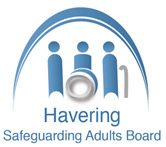Self Neglect
Self-neglect is an extreme lack of self-care to the extent that it threatens personal health and safety. It can occur as a result of an individual experiencing poor physical or mental health, brain injury, trauma, addictions, poverty, isolation from family and friends or dementia. The person becomes physically unable to care for themselves or the environment they live in.
Self neglect is sometimes associated with hoarding and may be a result of other issues such as addictions and mental health illness.
There are many ways that self-neglect can present itself. These are some indicators that may help to identify if an individual is self-neglecting:
- Inattention to personal hygiene including sores/ulcers with poor healing, dirty hair, skin and nails
- Living in unsanitary conditions, human or animal faeces not disposed of
- Declining family or community support
- Unwilling to attend appointments including medical or housing appointments
- Hoarding, unable to part with things that no longer have a need or a use such as magazines, broken items, letters, cans, clothing etc.
Watch this video on what to do about self-neglect
Hoarding
What is Hoarding?
Heather Matuozzo who set up the UK’s first social enterprise dedicated to helping hoarders, Clouds End CIC in 2009 and who is recognized as one of the country’s leading hoarding specialists explains:
The film below tells Keith’s story, in his own words, describing how hoarding affected his life and with the right support, his journey to recovery. Professionals (including fire officers, social workers and mental health staff) talk about the challenges hoarding can present and approaches that can help support recovery.
Types of Hoarding
There are three types of hoarding:
This is the most common. This could consist of one type of object or a collection of a mixture of objects such as old clothes, newspapers, food, containers or papers.
Animal hoarding is on the increase. This is the obsessive collecting of animals, often with an inability to provide minimal standards of care. The hoarder is unable to recognise that the animals are or may be at risk because they feel they are saving them.
This is a new phenomenon of hoarding. There is little research on this matter and it may not seem as significant and inanimate and animal hoarding, however people that do hoard data could still present with same issues that are symptomatic of hoarding. Data hoarding could present with the storage of data collection equipment such as computers, electronic storage devices or paper and a need to store copies of emails, and other information in an electronic format.
